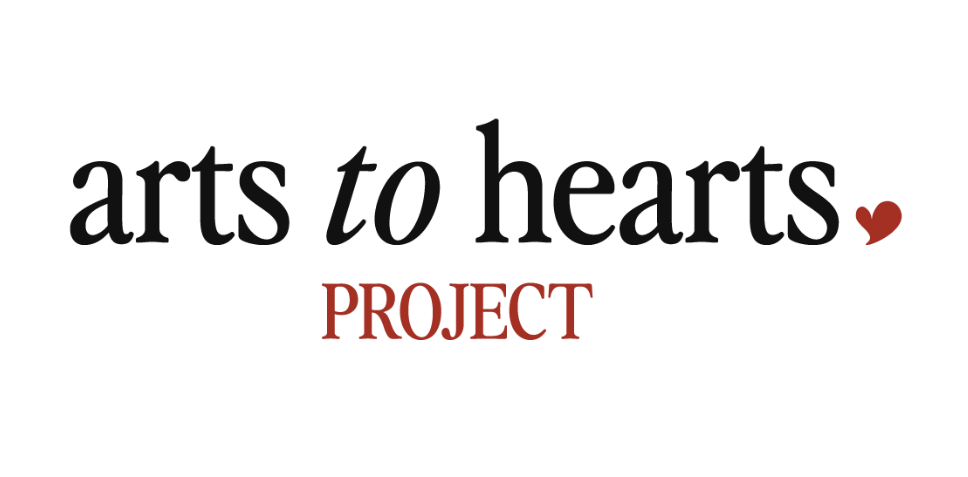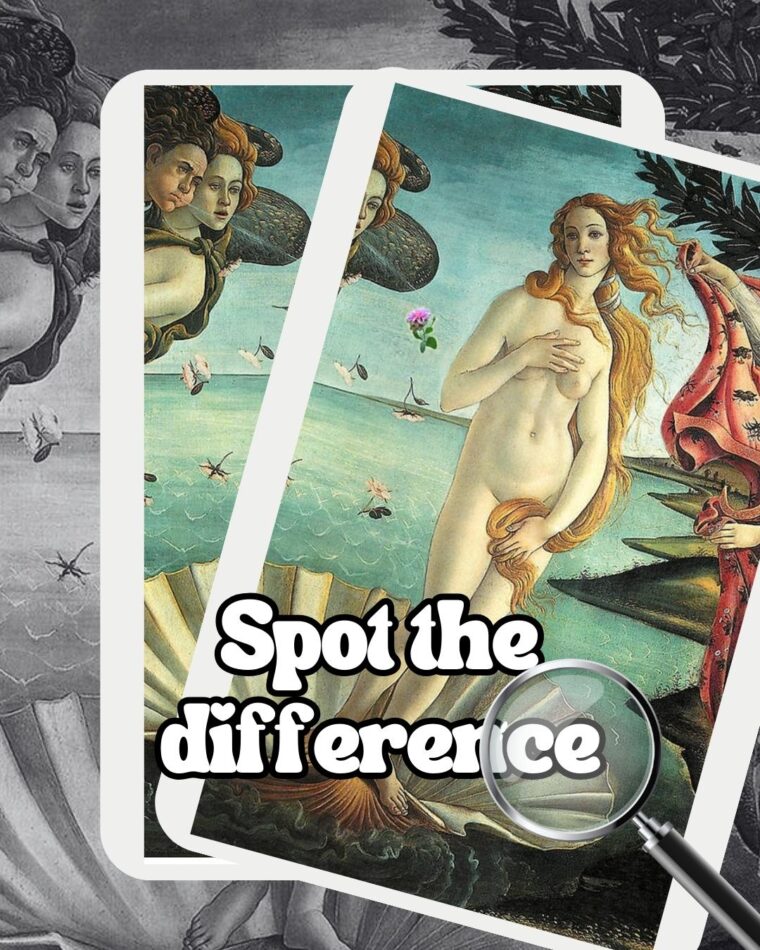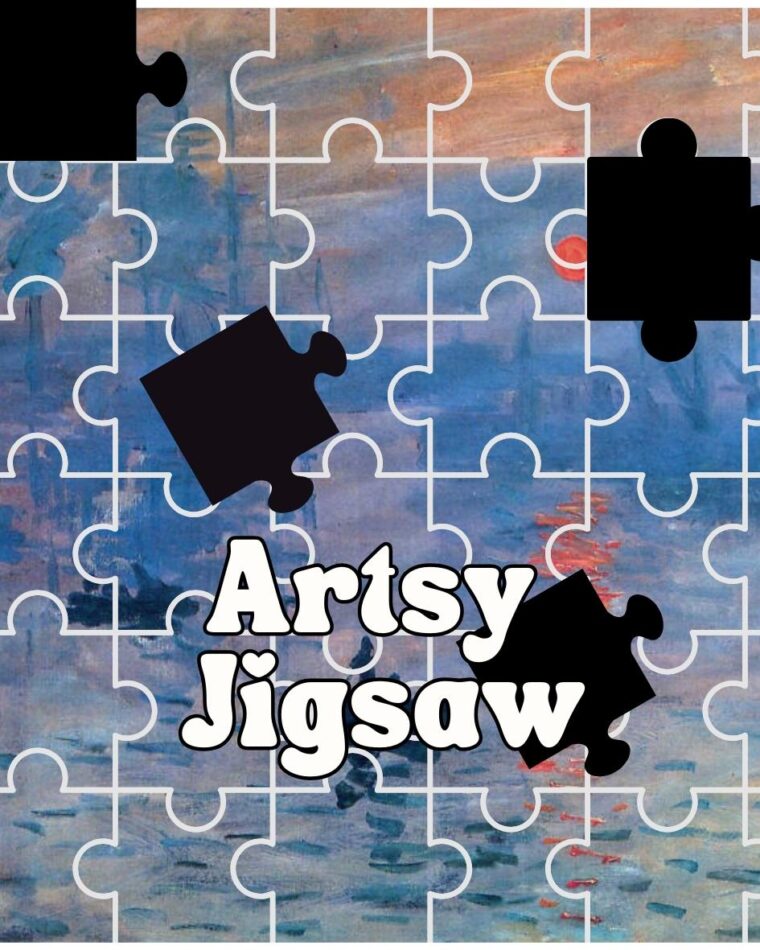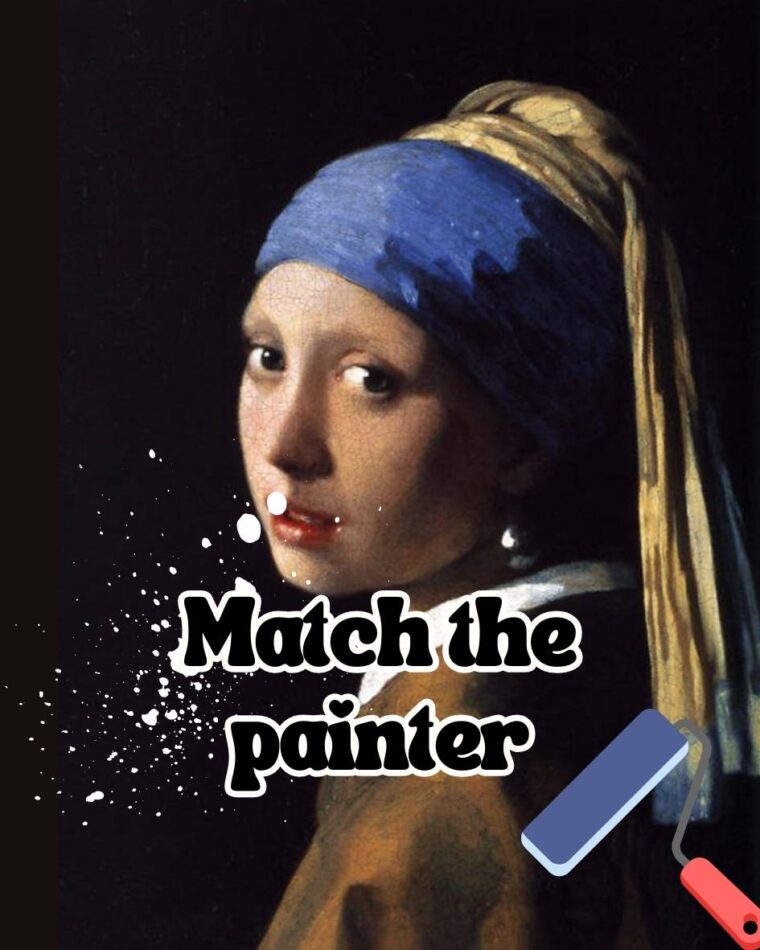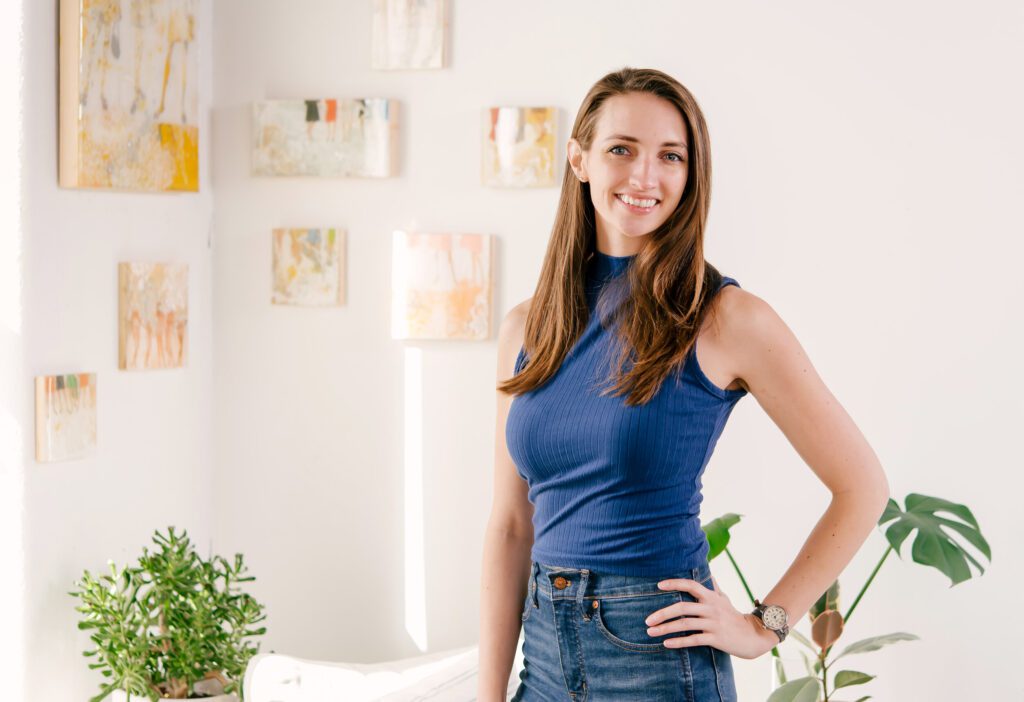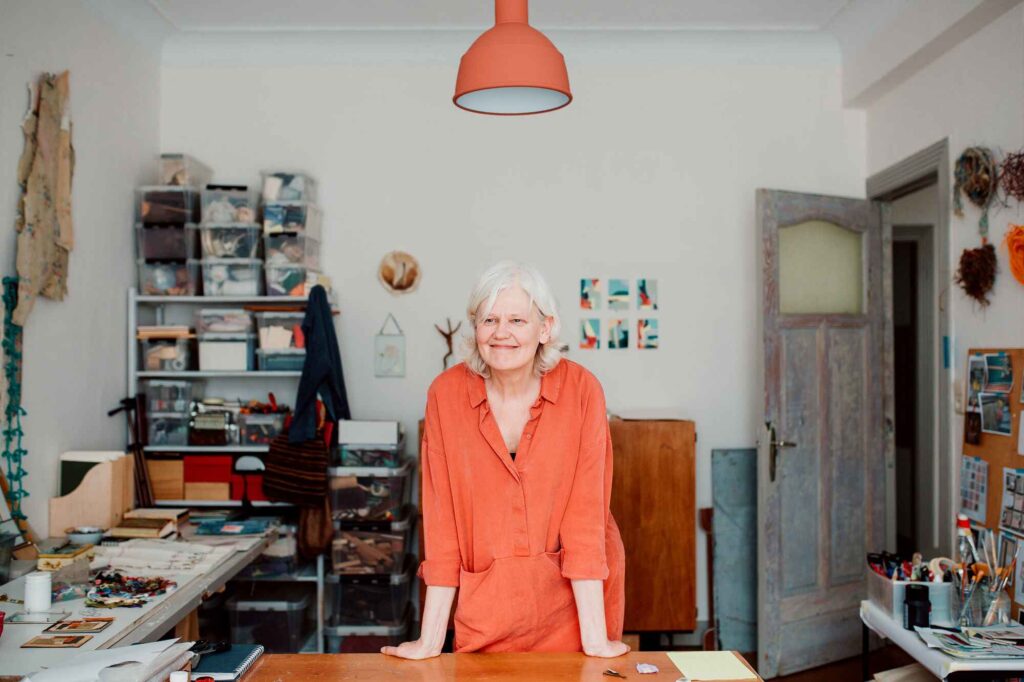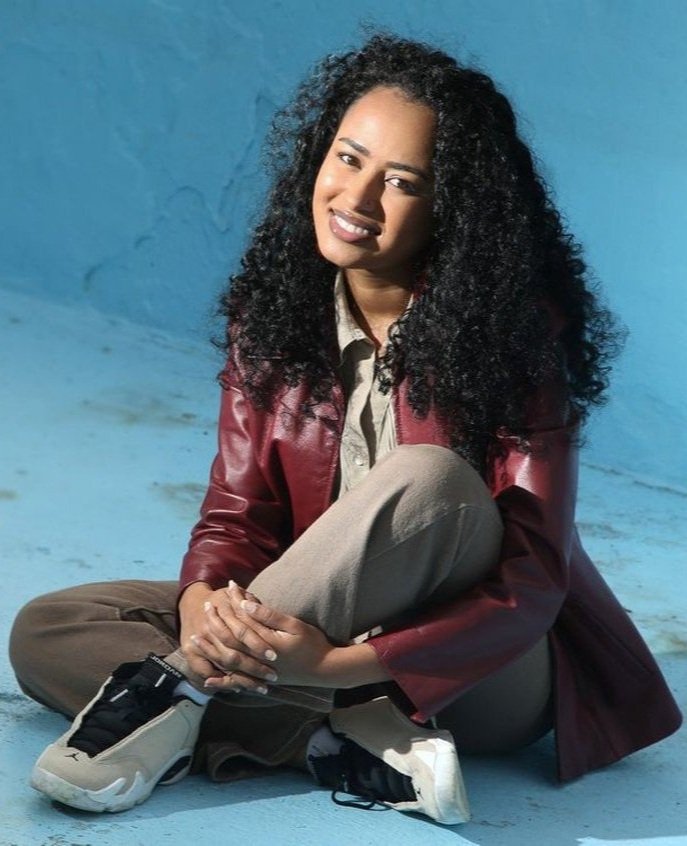
A Peek Into Varunika Saraf’s Craetive Space for Thoughtful and Historic Art



Dr Varunika Saraf is an artist and art historian based in Hyderabad. Saraf has participated in several group shows such as Makeshift Memorials, Small Revolutions, Blaffer Art Museum (2024), Sangam/Confluence, Heidelberger Kunstverein (2020), and Phantoms of Asia, Asian Art Museum (2012). She is the recipient of Asia Society’s Asia Arts Future Award (2023). In 2016, Saraf received the Amol Vadehra Art Grant. She was the Summer Research Fellow at the Getty Research Institute, Visiting Fellow at the Max-Planck Institute, Florence, NTICVA Visiting Fellow at the V&A Museum and the CWIT fellow at the Centre for South Asian Studies, University of Cambridge. Saraf holds a PhD and an MPhil (Visual Studies) from JNU and an MFA (Painting) from the University of Hyderabad. In 2023, she participated in the Sharjah Biennale 15, receiving an honourable mention for her embroidered series, We, The People. Her works are currently on view at the Asia Pacific Triennial 15, Queensland Gallery of Modern Art. Chemould Prescott Road, Mumbai represent Saraf.
And guess what? Varunika Saraf is featured in our Studio Visit Book, Vol. 5, alongside many talented artists worldwide. Want a sneak peek? Grab your copy now from our shop and enjoy the fantastic artwork created by this global community.
https://shop.artstoheartsproject.com/products/the-creative-process-book
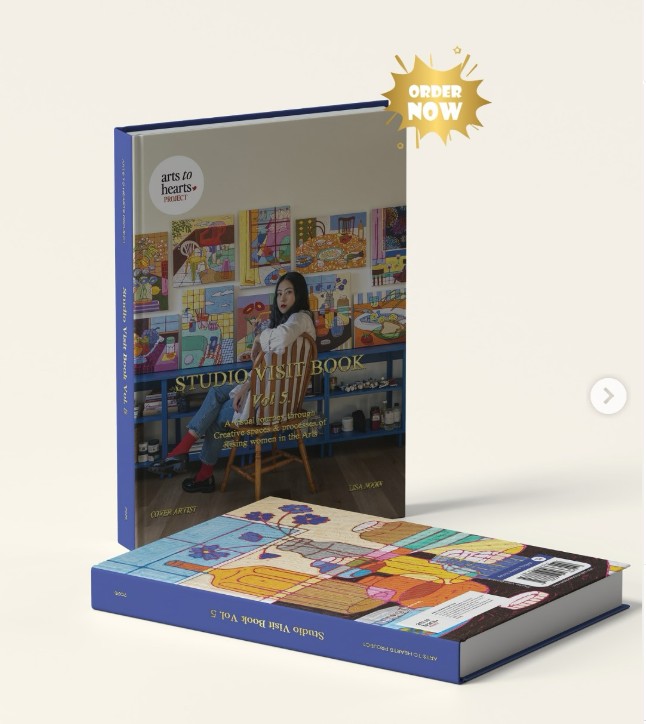

In this week’s studio visit interview, we step into the creative space of Dr. Varunika Saraf—artist, art historian, and our guide through a space where colour, history, and quiet thought come together. Varunika shares a typical day in her studio, from long hours spent drawing, painting, and embroidering, to moments of deep reflection with a podcast playing softly in the background. She also opens up about the profound historical and visual influences behind her work, from medieval visions to Indian miniature painting. Her studio, which she designed herself, is filled with sunlight, a climbing bougainvillaea, a cosy library corner, and the faint smell of isopropyl and fresh pigments—a sign of new colours being born. Whether she’s organising tools with closed eyes or simply sitting at her favourite desk, this is a place of purpose, peace, and passion.

1. Can you describe your typical studio day and creative process?
On a typical day, I am either drawing, painting, embroidering, reading or making notes to the distant sound of a podcast or the news. I can’t bear soundless spaces while working and thus leave them on even when I drift off into my thoughts. I like to start early, and if I do not have any social engagements or household chores, I am at the studio till late at night. On a great day, I lose track of time; on glum ones, you can find me deep in contemplation over what I call ‘the mess’. Periodically, I move things around and reorganise; I like the freshness and renewal that comes with it. When there is nothing to do, which is rarely, or when I hit a creative roadblock, there is always cleaning, mending or colours to grind.
2. What is the primary inspiration behind your current body of work?
My works interrogate the role of history in shaping our present. My works ‘remediate’ the iconography of miraculous and apocalyptic visions. Medieval imagery of interpretations and revelations, such as from the Augsburg Wunderzeichenbuch, is used to develop a language that allows us to process spectacles and anxiety caused by sociopolitical upheavals. I also draw inspiration from Indian art history regarding technique and imagery, particularly ‘miniature’ paintings from the 16th to 19th centuries. Central to my practice since 2001 is wasli, a surface created by the Mughal technique of binding together layers of paper. I have modified this technique to create large surfaces on which I cast a rich deposit of colour, each layer painstakingly built up by different washes of watercolours ground from natural and synthetic pigments.
3. What is your favourite memory or incident from your studio?
The first visitor to my studio. The day I moved in, a beautiful moth flew in and stayed for a while, long enough for me to paint a small sketch of its pearlescent body speckled with tiny orange and black dots.

4. Do you have any studio assistants, or do visitors, such as pets or children, often accompany you?
No
5. How would you describe a dream studio for yourself?
In 2018, I designed and established my dream studio. For a long time, I had an itinerant studio practice. I created works for the first two solo shows between cities and temporary studio spaces. My new space is sunlit and has a bright Fuchsia bougainvillaea that I planted, which has now wound its branches over the balcony railing. It has enough space for me to experiment with large-scale paintings, create watercolours from pigments from all over the globe, and work on several paintings simultaneously. It also doubles up as a space where I can read, research and write. The best part is the tiny library in the corner that holds all my books and archival material.



6. What does your studio smell of right now?
Faint lingering smell of Isopropyl and pigments as I have just finished making a new batch of watercolours.
7. If you could set up your studio anywhere in the world, where would it be?
Anywhere where my family is.


8. Can you discuss any ongoing projects or plans for your work?
I have started working towards my next solo show.
9. How do you organise your space?
I have a dedicated space for everything–art materials, papers, books, pigments, tools, etc. My studio is organised so I can reach out and find what I need even with my eyes tightly shut.


10. What is your favourite corner in the studio?
My desk.
Varunika Saraf’s studio feels like a quiet sanctuary—thoughtful, sunlit, and full of intention. It’s a space that invites stillness and deep focus, where colour is carefully mixed, ideas are nurtured, and time seems to slow down. The studio breathes with her rhythm: calm, methodical, and deeply connected to her art. There’s a sense of quiet magic—part library, part laboratory, and part memory box—where every corner holds meaning.
Visit our website to explore the virtual studio spaces of other artists. To be featured on our website, remember to apply for this month’s call for art.
Read more about Varunika on her Website and Instagram.
Arts to Hearts Project is a global media, publishing, and education company for
Artists & Creatives, where an international audience will see your work of art, patrons, collectors, gallerists, and fellow artists. Access exclusive publishing opportunities and over 1,000 resources to grow your career and connect with like-minded creatives worldwide. Click here to learn about our open calls.

